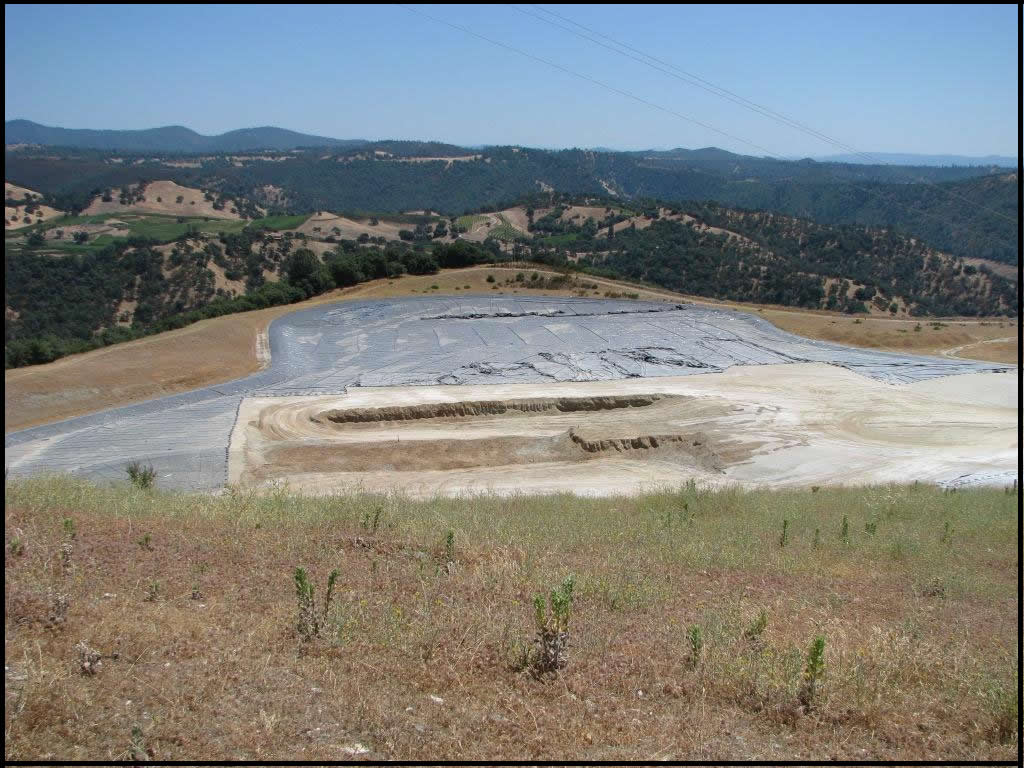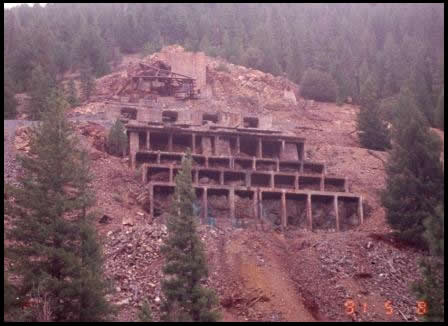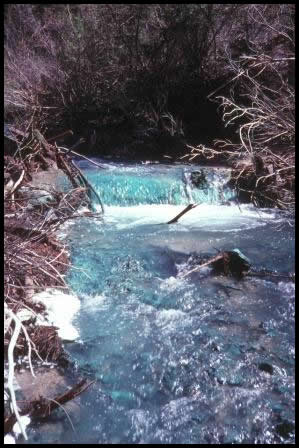Mining Program - Do I Need To Submit A Report Of Waste Discharge?
Do I Need To Submit A Report Of Waste Discharge?

Before beginning mining, the property owner and operator (together) are required to have Waste Discharge Requirements (WDRs) or other documents from the Regional Water Quality Control Board allowing discharge to land of mining waste. Mining waste as defined in the Porter-Cologne Water Quality Control Act is, “all solid, semisolid, and liquid waste materials from the extraction, beneficiation, and processing of ores and minerals. Mining waste includes, but is not limited to, soil, waste rock, and overburden, as defined in Section 2732 of the Public Resources Code, and tailings, slag, and other processed waste materials, including cementitious materials that are managed at the cement manufacturing facility where the materials were generated.” This definition is very broad and covers all mining materials. Therefore, if you are planning to mine a report of waste discharge must be submitted with the proper filling fees.
Submitting a Report of Waste Discharge
The California Water Code (CWC) requires that any person discharging waste, or proposing to discharge waste, that could affect the quality of the waters of the state, to file a report of waste discharge (ROWD) (CWC §13260).
ROWD
A ROWD has three main components, the application (Form 200), the technical information and report(s) for the ROWD, and the filing fee. Please note, in the application under the Facility Information section of Form 200 you must include a physical address where legal notice may be served.
The second component of the ROWD is the technical information necessary to evaluate the waste discharge. Requirements for the technical information needed in the ROWD are found in California Code of Regulations (CCR) Title 27 (Title 27 §21710-21760). Title 27 also has specific requirements for mining waste management (Title 27 §22470). You may obtain a PDF copy of Title 27 from the State Water Resources Control Board’s web site at:
In the ROWD, Dischargers must provide information on waste characteristics, geologic and climatologic characteristics of the mine site and the surrounding region, installed features, operation plans for waste containment, precipitation and drainage controls, and closure and post closure maintenance plans. We believe that information on waste characteristics should be completed first in order to determine waste classification and to establish waste containment unit design.
Waste Characterization
 CWC requirements for the ROWD, include a technical report on the physical and chemical characteristics of the
waste that could affect its potential to cause pollution or contamination and a technical report that evaluates
the potential of the discharge of the mining waste to produce, over the long term, acid mine drainage, the discharge or leaching of heavy metals, or the release of other hazardous substances (CWC 13260(k)). These technical reports are typically referred to as waste characterization.
CWC requirements for the ROWD, include a technical report on the physical and chemical characteristics of the
waste that could affect its potential to cause pollution or contamination and a technical report that evaluates
the potential of the discharge of the mining waste to produce, over the long term, acid mine drainage, the discharge or leaching of heavy metals, or the release of other hazardous substances (CWC 13260(k)). These technical reports are typically referred to as waste characterization.
Waste characterization is required in order to classify the waste and quantify its potential threat to water quality (27 §22480). In order for characterization to be meaningful, the sample material must be representative of the entire range of mining waste discharged. Therefore, a sampling plan that addresses representative sampling of the mining waste should be submitted prior to sampling and we want to be notified when the samples are to be collected so that we may observe the process.
Waste characterization testing must be performed by California certified labs. A California certified is a lab accredited by the California Environmental Laboratory Accreditation Program. The Waste Extraction Test (WET) should be used to determine the amount of extractable substance in waste rock (CCR Title 22 Division 4.5, Chapter 11, Article 5, Appendix II). Furthermore, Acid Generation Potential testing must also be performed to determine whether the material has the potential to generate acid. More information is available in the Mining Waste Tech Note (June 2008). Analytical results and discussion of potential threats to water quality posed by the waste should be included as part of the technical report(s) of waste characterization.
When waste characterization is complete, a better understanding of potential installed features, operation plans for waste containment, precipitation and drainage controls, and closure and post closure maintenance plans should be clear and will provide the basis for completing the ROWD.
Filing Fee
The third component of a ROWD is the filing fee. The Water Code requires any person discharging waste, or proposing to discharge waste, within any region that could affect the quality of the waters of the state to submit an annual fee (CWC 13260 (d)(1)(A)). Annual fees for waste discharge requirements (WDRs) are based on the discharge’s fee rating according to the Annual Fee Schedules available from the State Water Resources Control Board’s web site at:
Based on experience most mining discharges are categorized as 3C or higher. Based on this experience the filing/annual fee would be $2,040 or higher. The fee shall be in the form of a check made payable to the State Water Resources Control Board.
Industrial Storm Water Permit
Both the CWC and the federal Clean Water Act require that mining facilities obtain coverage under the General Industrial Storm Water Permit, State Water Resources Control Board Water Quality Order No. 97-03-DWQ. A copy of the Notice of Intent to comply with the General Industrial Storm Water permit is enclosed. Additionally, a Storm Water Pollution Prevention Plan must be prepared and kept on site. You may obtain more information about the Industrial Storm Water Program from Bob Ditto of the Central Valley Water Board at (916) 464-4841 or from the State Water Resources Control Board’s web site at:
Reports
Any technical report required that involves planning, investigation, evaluation, engineering design, or other work requiring interpretation and proper application of engineering or geologic sciences shall be prepared by or under the direction of persons registered to practice in California pursuant to California Business and Professions Code sections 6735, 7835, and 7835.1. As required by these laws, completed technical reports must bear the signature(s) and seal(s) of the registered professional(s) in a manner such that all work can be clearly attributed to the professional responsible for the work.

Consistent with CWC 13264, you are required to submit a complete ROWD at least 140 days prior to discharging waste. This submittal shall include the filling/annual fee. Adoption of WDRs can take longer than 140 days depending on the completeness and adequacy of the ROWD. Discharging waste without first securing WDRs or a wavier is a violation of the CWC and exposes you to enforcement action, including administrative civil liability.
Please direct all mining ROWDs to:
For counties of Sacramento, Sierra, Yuba, Sutter, Colusa, Lake, Napa, Yolo, Solano, Contra Costa, Placer, El Dorado, Amador, Calaveras, Tuolumne, San Joaquin and Stanislaus:
Central Valley Regional Water Board
Title 27 Permitting and Mining Unit
11020 Sun Center Drive, #200
Rancho Cordova, CA 95670
Phone: (916) 464-3291
For Counties of Merced, Mariposa, Madera, Fresno, King, Tulare and Kern:
Central Valley Regional Water Board
1685 "E" Street
Fresno, CA 93706-2007
Phone: (559) 445-5116
For the Counties of Modoc, Shasta, Tehama, Plumas, Butte and Glenn:
Central Valley Regional Water Board
364 Knollcrest Drive, Suite 205
Redding, CA 96002
Phone: (530) 224-4845



